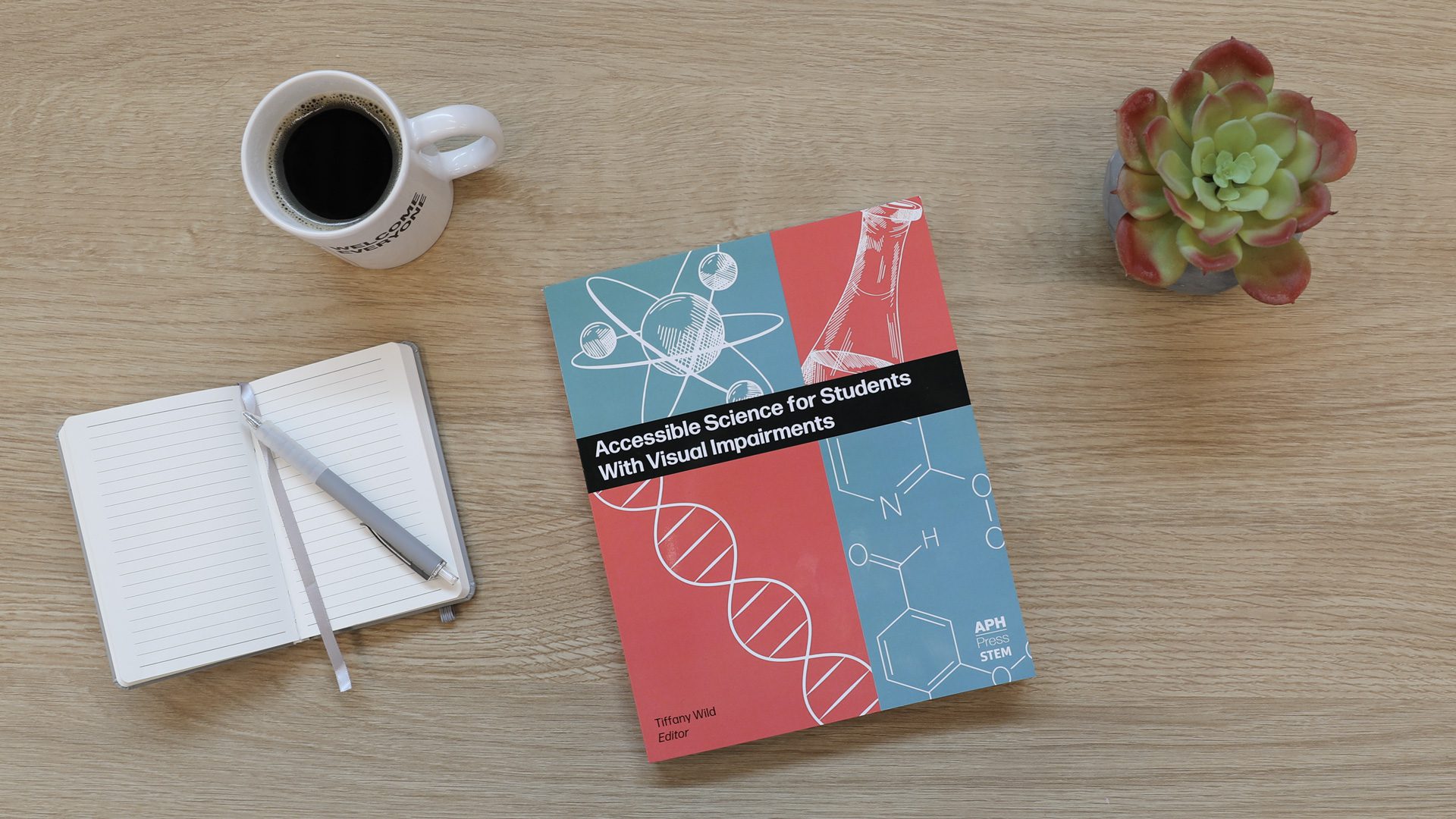Orders placed between March 27 – 31 will not ship until April 1 due to APH warehouse closure for inventory.
CloseAccessible Science: Ensuring Science is for Everyone

The modern world thrives on innovation, and the best innovation comes from a multitude of perspectives working together. That’s what’s so exciting about Accessible Science for Students with Visual Impairments, the first book in APH Press’s STEM Series: it’s a toolkit for educators to provide their students who are blind or low vision with the opportunity to be among the next generation of innovators. The book provides practical advice for educators across a variety of science subjects, with subject-by-subject explorations of student expectations, adaptations for students, and how teachers of students with visual impairments (TVIs) and science teachers can collaborate to ensure that everyone in the classroom can experience the joy of scientific discovery.
We caught up with Dr. Tiffany Wild, editor for Accessible Science, to talk about the upcoming book. Dr. Wild is an Associate Professor in the Department of Teaching and Learning at The Ohio State University and came to understand the need for a book like this one in her early days as a middle school teacher.
“I kept getting students who had visual impairments in my classes, and I didn’t know what to do,” she says. “[The administrators] told me to ask the students … All I got from the students was to make the print bigger, and you know what happens when you do that: It gets fuzzy. I wasn’t getting the support I needed.” Wild’s experience as a young educator is a common one that is exacerbated by the complexities of teaching science—some fields, like astronomy, rely heavily on visual learning, while others, like chemistry, rely on lab experiments where safety is a concern. Many science educators don’t get the training or support they need to ensure students who are blind or low vision can participate fully.
Wild has spent her career developing methods to bridge the gap between TVIs and general educators. It’s necessary work, says Wild. “A content specialist doesn’t know how to teach without showing photos and videos,” she explains. “That’s a huge disconnect. Then, on top of that, we’re [supposed] to teach research-based methods.” Solving the problem is about “understanding the vernacular and the frustrations of the groups and at the same time demonstrating that the kids can do this,” she emphasizes.
Accessible Science is designed around that simple fact: “the kids can do this.” But in order to do it, the kids need an opportunity to fully engage with the material. The book contains an anecdote of a student confidently stating that a turkey weighed “a million pounds” after hearing a parent talk about lifting the Thanksgiving bird. Misconceptions can be common for students who are blind or low vision, and Wild’s holistic approach to dispelling them demonstrates the power of scientific collaboration that Accessible Science emphasizes: she enlisted a local wildlife organization to bring in a taxidermized turkey and even demonstrate a turkey call to allow students to investigate the animal’s size, feel, and sound so they could make the connection firsthand. With such examples, Wild says, all students “can do science, [perform] dissections, learn about astronomy—anything a sighted person can do and not have low expectations.”
Working with a team of subject matter experts, Wild has created a book that lays out how students who are blind or low vision engage with the world and how to use that knowledge to make the science classroom better for every student. “All the tactile [applications] and hands-on, inquiry-based learning. … If you look at general education research, we’re supposed to be teaching that [way] anyway,” Wild says. “I’d love to see it be the textbook for a [mainstream] science methods course.”
Wild emphasizes that this book’s approach to science benefits everyone, not just those who are blind or low vision. “I tell my students: Whatever works for students who are blind and visually impaired works for everybody,” says Wild. “It’s normalizing disability. Now more than ever, we need that.” She points to all the ways that increasing access for someone increases it for everyone: “Turning on captions was designed for people with disabilities, and everyone is benefiting from it. It’s second nature to [the public], but it developed because of disability. Color contrast. Behavior modification. That’s my world! And people are benefiting from it.”
With Accessible Science, Wild is poised to open the science classroom in new ways, bringing together TVIs and science educators around a common purpose: ensuring science is for everyone.
_____
Accessible Science Education for Students with Visual Impairments is the first title in APH Press’s new STEM series and will be out in April 2025.
